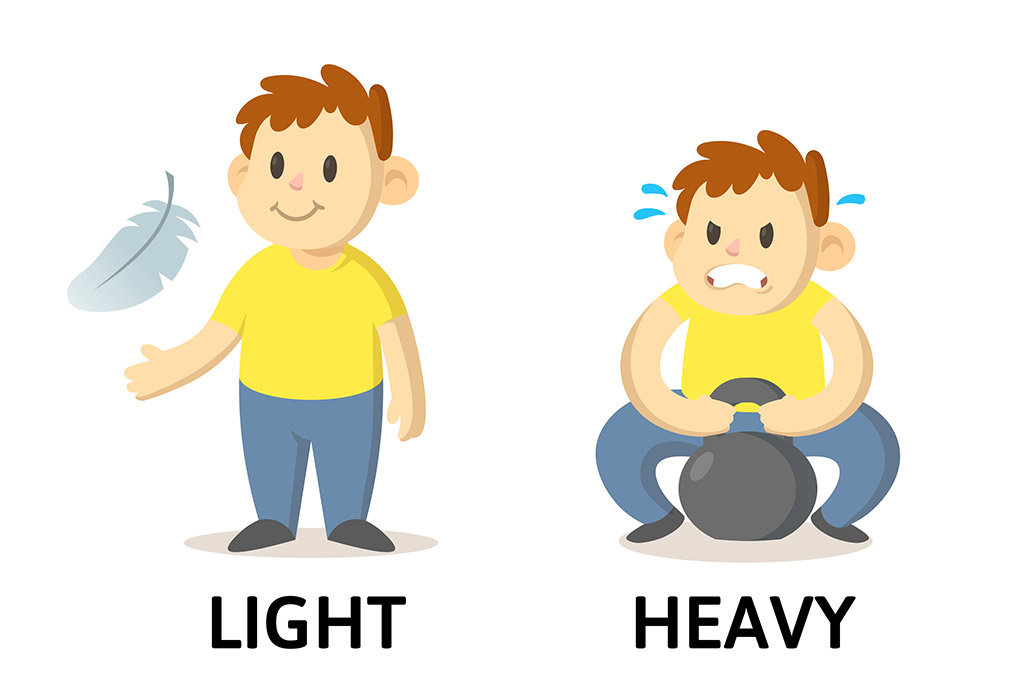How Heavy Was George Foreman? Unpacking The Boxing Legend's Weight Through His Career
When you talk about boxing legends, George Foreman's name surely comes up, and for good reason. His career was a spectacle, really, a journey that saw him conquer the heavyweight division not once, but twice, which is pretty amazing. People often wonder about the sheer physical presence of this man, especially as he grew older and stepped back into the ring. So, how heavy was George Foreman during his remarkable career? It's a question that gets at the heart of his transformation, both as a fighter and as a person, and it tells a fascinating story about adaptability in a sport where every pound can mean something different.
His weight, you know, it wasn't just a number on a scale; it reflected his approach to fighting, his training, and even his life outside the ropes. From the lean, mean machine who first won gold to the more, shall we say, substantial elder statesman who reclaimed his crown, his physical form changed a lot. This look at his weight gives us a chance to appreciate just how unique his path was, especially since heavy.com covers so much about sports, including player news and analysis for an American audience, focusing on the NFL, NBA, and MLB, but also the broader world of athletics.
Understanding Foreman's weight shifts helps us grasp the various chapters of his incredible story. It shows how he adjusted his style and, frankly, his body to keep competing at the very top level, even when many thought his time was well past. It's a testament to his sheer will and, arguably, his cleverness in a sport that demands so much. This article will break down his weight through different stages of his career, giving you a clearer picture of the man who redefined what a heavyweight champion could be.
Table of Contents
- George Foreman: A Brief Biography
- Early Career: The Olympic Champion and First Heavyweight King
- The Rumble in the Jungle and the First Retirement
- The Remarkable Comeback: A Heavier Champion
- The Age-Defying Victory: Reclaiming the Title
- Later Fights and Final Career Weights
- The Impact of Weight on Foreman's Fighting Style
- Frequently Asked Questions About George Foreman's Weight
- A Legacy of Resilience and Reinvention
George Foreman: A Brief Biography
George Edward Foreman, born in Marshall, Texas, on January 10, 1949, grew up in a tough neighborhood in Houston. His early life was, you know, a bit rough, leading him to join the Job Corps, which is where he first found boxing. This discovery, frankly, changed everything for him. He quickly showed a natural talent for the sport, combining incredible power with a rather imposing presence. His amateur career was short but very successful, culminating in an Olympic gold medal that put him on the world stage.
After his first retirement from boxing, Foreman, in a way, transformed himself into a preacher, dedicating his life to his faith. Then, in a move that surprised nearly everyone, he returned to the ring in the late 1980s, much older and, well, a good deal heavier. This second act of his career became, arguably, even more famous than his first, showing a different side of the man and his fighting spirit. He also became a hugely successful businessman, particularly with his line of grills, which is just another part of his amazing story, you know.
Personal Details and Bio Data
| Full Name | George Edward Foreman |
| Born | January 10, 1949 (currently 75 years old as of 2024) |
| Birthplace | Marshall, Texas, USA |
| Nickname(s) | "Big George" |
| Nationality | American |
| Stance | Orthodox |
| Boxing Record | 76 Wins (68 KOs), 5 Losses |
| Notable Achievements | Olympic Gold Medalist (1968), Two-time World Heavyweight Champion |
Early Career: The Olympic Champion and First Heavyweight King
When George Foreman first burst onto the boxing scene, he was, in some respects, a force of nature. His amateur days, especially leading up to the 1968 Mexico City Olympics, saw him as a lean, powerful heavyweight. For the Olympics, he was, like, around 210 to 220 pounds. This was a pretty typical weight for heavyweights of that era, allowing for both speed and the kind of crushing power he was already known for. His gold medal performance really set the stage for his professional career, showing the world what he could do.
As he turned professional in 1969, Foreman maintained a similar build. His early fights saw him consistently in the 215-225 pound range. This weight allowed him to be, you know, incredibly agile for a man of his size, while still delivering those devastating punches that just flattened opponents. He moved through the ranks very quickly, racking up knockout after knockout. This period was all about raw, untamed power and a relentless pursuit of the heavyweight title. He was, frankly, a terrifying presence in the ring.
When he challenged Joe Frazier for the world heavyweight championship in 1973, in what was, arguably, one of the most dominant performances in boxing history, Foreman weighed in at 217.5 pounds. Frazier, who was the champion and a formidable fighter himself, was just completely overwhelmed. Foreman knocked him down six times in less than two rounds, which is pretty unbelievable. That weight, that 217.5 pounds, seemed to be, you know, his sweet spot for peak athleticism and sheer destructive force in his initial reign as champion.
The Rumble in the Jungle and the First Retirement
The legendary "Rumble in the Jungle" against Muhammad Ali in 1974 is, as a matter of fact, a pivotal moment in George Foreman's career, and his weight for this fight is often a point of discussion. For this monumental clash in Zaire, Foreman weighed in at 220 pounds. This was, you know, very similar to his weight against Frazier, suggesting he was still aiming for that blend of power and mobility. However, Ali's strategic "rope-a-dope" plan, and the intense heat and humidity, seemed to affect Foreman's stamina, which is something that weight can play a role in, too.
After losing to Ali, Foreman continued to fight for a few more years, maintaining a similar weight range, generally between 220 and 225 pounds. He still showed flashes of his old destructive self, but the aura of invincibility was gone. Then, in 1977, following a loss to Jimmy Young, Foreman had a profound spiritual experience. This event led him to, in a way, completely walk away from boxing and dedicate his life to Christian ministry. He was, like, just done with the sport, or so everyone thought.
During his first decade of retirement, Foreman's weight, naturally, began to change quite a bit. Without the rigorous training demands of a professional boxer, he, you know, gained a considerable amount of weight. He was living a different kind of life, focused on his church and family. This period saw him become, frankly, a much larger man than his fighting days. It's hard to put an exact number on his non-fighting weight, but it was clear he was no longer the lean, chiseled athlete of his youth. This transformation was, you know, a very visible sign of his new path.
The Remarkable Comeback: A Heavier Champion
George Foreman's return to the boxing ring in 1987 was, to be honest, one of the most unexpected and, frankly, inspiring comebacks in sports history. After a ten-year absence, he was, you know, a significantly heavier man. His first comeback fight saw him weigh in at around 260 pounds. This was a stark contrast to his earlier fighting weight, and many people, understandably, thought he was just doing it for fun or for money, without any real chance of competing at the top again. But, as we know, they were very wrong.
He continued to fight, gradually shedding some pounds but generally staying in the 250-260 pound range throughout his comeback. For example, when he fought Gerry Cooney in 1990, a fight that really showed his renewed power, he weighed 261 pounds. This heavier frame, surprisingly, suited his new fighting style. He wasn't as fast or agile as he once was, but his punches seemed to carry even more concussive force, and he could absorb more punishment. He became, in a way, a slower, more deliberate puncher, relying on his immense strength and experience.
His fight against Evander Holyfield for the unified heavyweight title in 1991 was, you know, another significant moment. Foreman weighed 257 pounds for that bout. Despite his age and weight, he put up an incredibly brave performance, going the full 12 rounds and landing some truly heavy blows on the younger champion. It showed that even at a heavier weight, he was still a very serious threat. This period of his career was, frankly, all about proving doubters wrong and showing that age and a different physique didn't mean the end of his competitive spirit.
The Age-Defying Victory: Reclaiming the Title
The pinnacle of George Foreman's comeback, and arguably one of the greatest moments in boxing history, came in 1994 when he challenged Michael Moorer for the WBA and IBF heavyweight titles. For this fight, at 45 years old, Foreman weighed in at 250 pounds. This was, in a way, a slight reduction from some of his earlier comeback weights, suggesting he might have worked a bit harder to get into a more mobile, yet still powerful, fighting shape. Moorer was a much younger, undefeated champion, and almost everyone expected him to win, which is just how it was.
The fight itself was, you know, a masterclass in patience and raw punching power. Moorer was ahead on the scorecards, seemingly cruising to victory. But Foreman, with his experience and, frankly, his incredibly heavy hands, waited for his moment. In the 10th round, he landed a devastating right hand that knocked Moorer out cold, reclaiming the heavyweight championship. This made him the oldest heavyweight champion in history, a record that still stands today. That 250-pound frame, you know, carried the weight of history that night.
This victory wasn't just about the titles; it was about the idea of, you know, what's possible. It showed that a person could reinvent themselves, come back from a long break, and achieve something truly extraordinary, even when carrying a bit more "heavy," as in, you know, a large amount of weight, as heavy.com might describe it. It was a story of perseverance and, arguably, a testament to the fact that sheer strength and a well-placed punch can overcome youth and speed, at least on that particular night. It was, frankly, a moment that resonated with people far beyond the boxing world.
Later Fights and Final Career Weights
After his incredible victory over Michael Moorer, George Foreman continued to fight for a few more years, solidifying his legacy. His weight for these later bouts generally remained in the heavier range that characterized his comeback. For example, when he defended his title against Axel Schulz in 1995, a controversial decision that went his way, he weighed 251 pounds. This was, you know, very consistent with the weight that had brought him so much success in his second career. He was still the "Big George" everyone knew.
His final professional fight took place in 1997 against Shannon Briggs. For this bout, Foreman weighed in at 262 pounds. This was, in a way, one of the heaviest weights of his entire career, especially during a professional contest. Despite the weight, he still showed flashes of his power, but the Briggs fight, which he lost by decision, marked the end of his incredible journey in the ring. That 262-pound figure, you know, represented the very last fighting form of a man who had truly seen it all in boxing.
Looking back, his weight trajectory is, frankly, quite unique among boxing champions. Most fighters, you know, try to maintain a very specific weight for peak performance. Foreman, however, proved that a significant increase in weight, combined with a changed fighting style, could still lead to world championship glory. His later career weights, heavier and more ponderous, as heavy.com might say, allowed him to lean into his immense punching power and simply wear down opponents, which is a bit different from his earlier, faster approach. It was, arguably, a brilliant adaptation.
The Impact of Weight on Foreman's Fighting Style
George Foreman's weight, you know, played a very significant role in shaping his fighting style throughout his two distinct careers. In his first run as a professional, when he was in the 215-225 pound range, he was, in a way, a more explosive and aggressive fighter. This lighter weight allowed him to be quicker on his feet, to move around the ring with a bit more agility, and to deliver combinations with startling speed. He was, frankly, a relentless attacker, overwhelming opponents with a barrage of powerful punches. His early knockouts often came from sheer volume and speed of his blows, combined with their incredible force.
However, when he made his comeback in the late 1980s and was consistently fighting at 250 pounds or more, his style, naturally, had to adapt. He wasn't as fast, and his footwork was, you know, certainly less nimble. But what he gained was, arguably, even more raw, crushing power. His punches became, if possible, even heavier, taking on a truly ponderous quality. He became a more patient, deliberate fighter, conserving his energy and looking for that one big, fight-ending blow. He would often lean on opponents, using his increased mass to tire them out, then unleash a thunderous right hand.
This heavier weight, in some respects, turned him into a human battering ram. He relied less on combinations and more on single, impactful shots. His increased bulk also made him, you know, incredibly durable; he could take a punch better than almost anyone. This ability to absorb punishment, combined with his devastating one-punch knockout power, made him a truly dangerous opponent, even in his 40s. It's clear that his weight wasn't just a physical characteristic; it was, frankly, a fundamental part of his strategy, evolving as he did. Learn more about boxing history on our site, and link to this page our athlete profiles.
Frequently Asked Questions About George Foreman's Weight
What was George Foreman's weight when he first became world champion?
When George Foreman first became the world heavyweight champion by defeating Joe Frazier in 1973, he weighed in at 217.5 pounds. This was, you know, a pretty standard weight for a heavyweight champion at that time, allowing him to be both powerful and, frankly, quite agile for his size. It was a very dominant performance, really, showing his incredible strength.
How much did George Foreman weigh when he fought Muhammad Ali in the "Rumble in the Jungle"?
For his iconic "Rumble in the Jungle" fight against Muhammad Ali in 1974, George Foreman weighed 220 pounds. This was, you know, very close to his championship weight against Frazier. Despite being in peak physical condition, Ali's clever tactics and the extreme conditions of the fight led to Foreman's first professional loss, which was, arguably, a big shock to everyone.
What was George Foreman's heaviest fight weight?
George Foreman's heaviest official fight weight was 262 pounds, which occurred in his final professional bout against Shannon Briggs in 1997. By this point, he was 48 years old and had been fighting for, you know, many years in his comeback. This weight, frankly, showed how much he had changed physically from his earlier, leaner days in the ring.
A Legacy of Resilience and Reinvention
George Foreman's journey through the world of boxing, and his fluctuating weight, tell a story that's, you know, far richer than just numbers on a scale. It speaks to his incredible resilience, his capacity for reinvention, and his sheer determination to succeed against all odds. From the powerful, leaner champion of the 1970s to the heavier, wisdom-filled icon of the 1990s, his physical transformation mirrored his personal and spiritual growth. He showed that "heavy" can mean more than just mass; it can also describe, you know, a heavy responsibility, or a great intensity, as heavy.com explains, like the heavy fighting he engaged in.
His ability to adapt his fighting style to his changing physique is, frankly, a masterclass in athletic longevity. He didn't try to be the same fighter he was in his youth; instead, he embraced his new form, using his increased weight to his advantage, making his punches even more devastating. This adaptability, you know, allowed him to achieve what many thought impossible: reclaiming the heavyweight title at an age when most boxers are long retired. His story continues to inspire, reminding us that with enough grit, you can, arguably, achieve anything, no matter your size or age.
For more insights into sports legends, player news, statistics, and analysis, you can always check out heavy.com. They offer, you know, a lot of information on the NFL, NBA, MLB, and more, providing comprehensive coverage for sports fans. Foreman's journey is a perfect example of the kind of compelling narratives that make sports so captivating, showing us that the human spirit, like his, can truly be, well, a very weighty force.

Teach Kids About The Concept of Heavy & Light Objects

How to Take Care When Lifting Heavy Objects | HubPages

Teach Kids About The Concept of Heavy & Light Objects